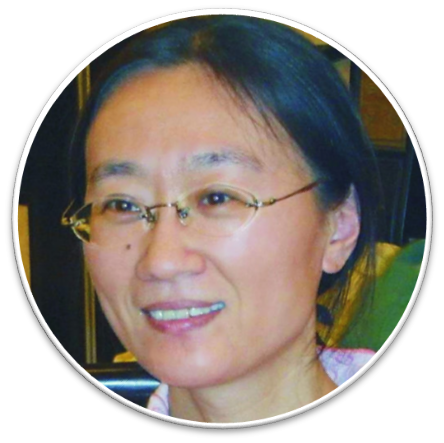Current term 2023-2027
The election for the term 2023-2027 took place during the IHFC main business meeting at the IUGG General Assembly 2023 in Berlin, Germany, on the 17th of July. In addition to the Past-Chair, four of the IHFC members are elected as officers representing the IHFC (see structure). The new commision members are:
 Graeme Beardsmore,
Graeme Beardsmore,
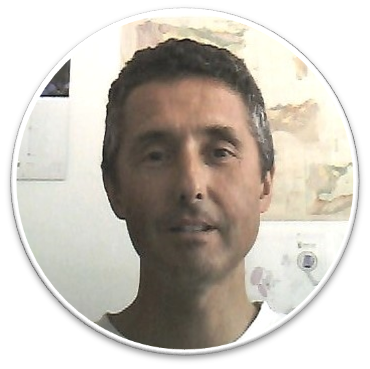 Paolo Chiozzi,
Paolo Chiozzi,
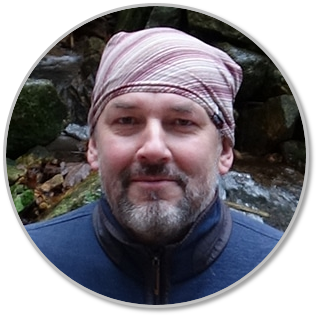 Petr Dedecek,
Petr Dedecek,
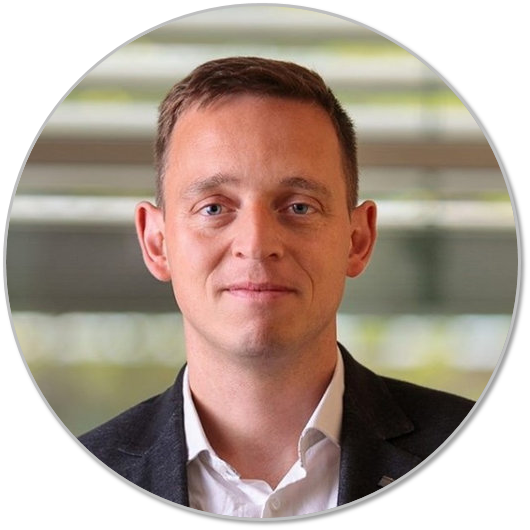 Sven Fuchs,
Sven Fuchs,
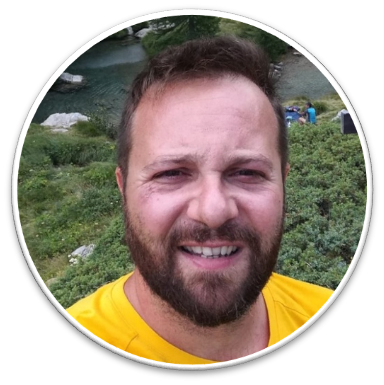 Gianluca Gola,
Gianluca Gola,
 Suze Pereira Guimaraes,
Suze Pereira Guimaraes,
 Robert Harris,
Robert Harris,
 Guangzheng Jiang,
Guangzheng Jiang,
 Youngmin Lee,
Youngmin Lee,
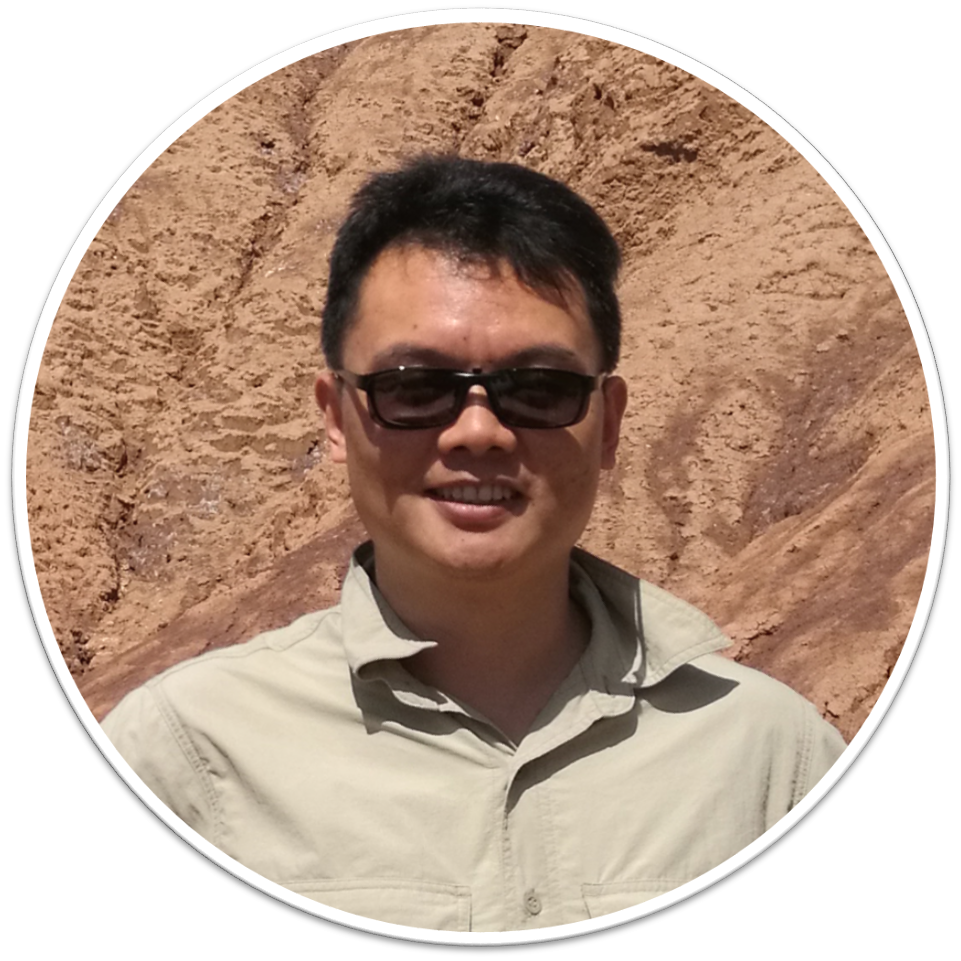 Shaowen Liu,
Shaowen Liu,
 Mareen Lösing,
Mareen Lösing,
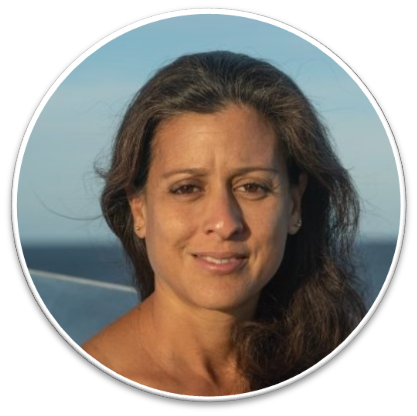 Raquel Negrete-Aranda,
Raquel Negrete-Aranda,
 Florian Neumann,
Florian Neumann,
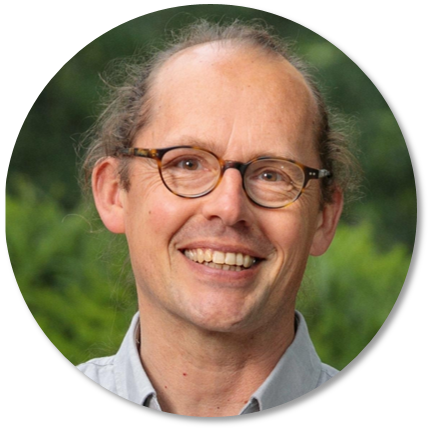 Ben Norden,
Ben Norden,
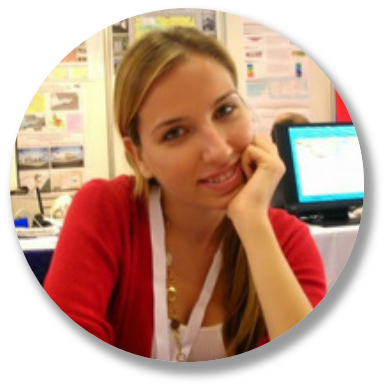 Elif Pazvantoglu,
Elif Pazvantoglu,
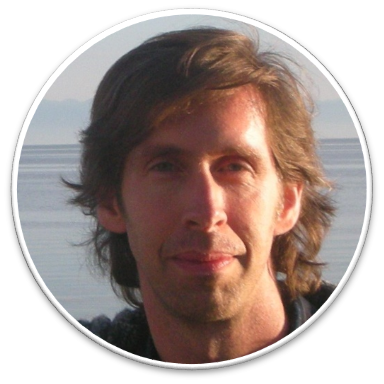 Jeffrey Poort,
Jeffrey Poort,
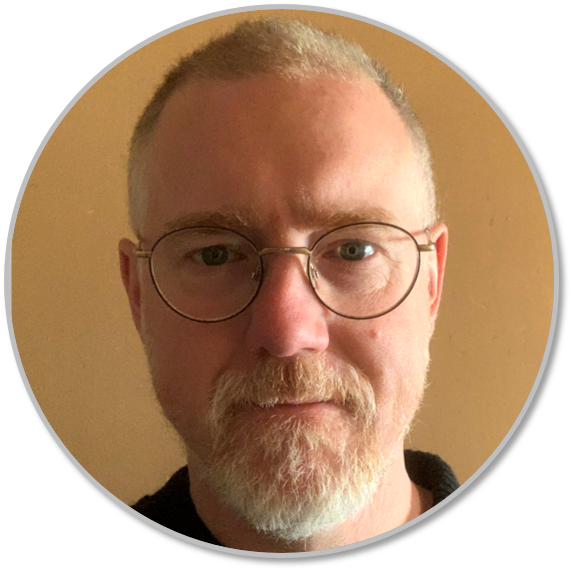 Tobias Staal,
Tobias Staal,
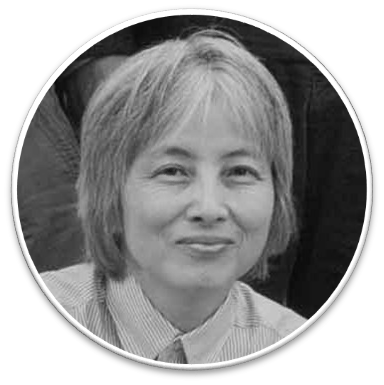 Akiko Tanaka,
Akiko Tanaka,
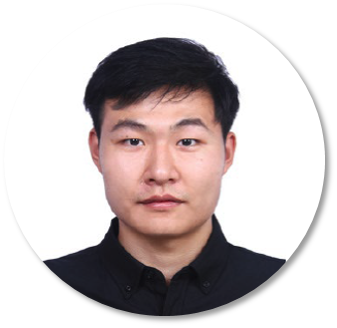 Yibo Wang,
Yibo Wang,
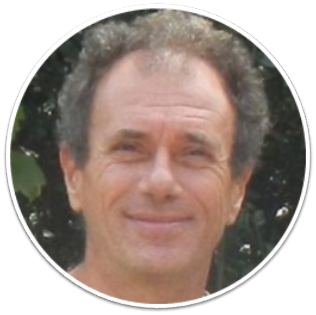 Massimo Verdoya,
Massimo Verdoya,

Graeme Beardsmore (Vice Secretary)
University of Melbourne
g.beardsmore@unimelb.edu.au
I have leveraged my technical background in heat flow and temperature measurement and modelling into a much broader involvement in the global geothermal energy sector. Currently my activities largely focus on pre-drill risk mitigation for geothermal energy, an area that I believe is the key to making geothermal power generation more attractive to investors and would-be developers.

Paolo Chiozzi
DISTAV University of Genoa (Italy)
chiozzi_rp@libero.it
Paolo Chiozzi received his MSc in Earth Sciences in 1989 and his Ph.D. in Geophysics at the University of Genoa (Italy) in 1995. Since 1996, he has been working on several projects encompassing a wide range of geodynamical and geothermal problems. His research is focused on the relationships between the thermal structure and the deformation processes within the lithosphere. He has developed techniques of spectral analysis of magnetic data to obtain information on the deep magnetic boundary and their relation with the temperature distribution and the Curie point. Moreover, his activity is addressed to the determination natural radioactivity, radiogenic heat production of rocks and underground temperatures. He has published more than 50 papers in international journals about terrestrial heat flow and related issues.

Petr Dědeček
The Czech Academy of Sciences
Department Geothermics, pd@ig.cas.cz
My research interests cover the entire field of geothermics related to heat flow density study. Recently, I focus namely on comparison of different methods for measuring of the thermal properties of rocks and soils and also on the possibilities of using the Distributed Temperature Sensing systems to measure temperature changes in deep boreholes. Last but not least, I also deal with numerical modeling of subsurface temperature field.

Sven Fuchs (Vice Chair)
GFZ Helmholtz Centre for Geosciences (profile)
Geosystems - Section Geoenergy, Telegrafenberg, 14473 Potsdam, Germany, sven.fuchs@gfz.de
My research interests focus on the Earths thermal field and its relevance for geodynamic processes as well as for the technological utilization of the subsurface (exploration of resources, geothermal production, geological storage of energy and waste, etc.). This includes detailed studies of the heat flow evolution and associated rock thermal properties, considering the effects of geoscientific processes across scales and times. For this task, I integrate geological data on various scales with geophysical surveys from boreholes (well-log interpretation) and surface (seismic data) as well as with data from laboratory studies of rock physics and chemistry into numerical models. Since 2019, I am the elected custodian of the IHFC Global Heat Flow Database.

Gianluca Gola
National Research Council of Italy (IGG-CNR, profile)
Institute of Geosciences and Earth Resources, Via Giuseppe Moruzzi 1, 56124 Pisa (Italy), gianluca.gola@igg.cnr.it
I am interested in the thermal and rheological aspects of the Earth's lithosphere by coupling multiple datasets, from the available geophysical data to the petrological and geochronological information. My research activity includes investigations on thermal petrophysics through laboratory measurements, the processing of borehole geophysical logs, and the numerical modelling of heat and fluid transport phenomena in the subsurface. Since 2012, I am involved in different national and European research projects dedicated to geothermal exploration and resource assessment in different geological realms.

Suze Pereira Guimarães
Geosciences Department at Federal Rural University of Rio de Janeiro, Brazil
sufisica@gmail.com
Professor and Researcher in the Geophysics from Geosciences Department at Federal Rural University of Rio de Janeiro, Brazil. Post-Doc in heat flow terrestrial and thermomagnetism in the Geothermal Lab from the National Observatory - ON/MCTI. Professional with more than 10 years of experience in QC data, processing and matched geophysical interpretation in the thermomagnetism (magnetometry, radiometry, electromagnetism and geothermal) with proven experience in airborne geophysical surveys and field management in South America and Africa countries. Writer and editor, education enthusiast, works with the Science popularization. Effective member of Women's Social Organizations (ABMGeo-RJ), national and international scientific societies as SBGf and IHFC. Has a graduated degree in Physics from the Federal University of Goias, Brazil (2005), MSc (2009) and PhD (2013) in Geophysics by the National Observatory, Brazil with a sandwich period at the University of Kentucky - US.

Robert Harris (Secretary)
Oregon State University
College of Earth, Ocean, and Atmospheric Sciences, Corvallis OR 97331 USA, rharris@coas.oregonstate.edu
Robert Harris received his M.Sc. in 1992 and Ph.D. in 1994, both in Geophysics at the University of Utah (USA). Currently my research interests are in the general area of marine heat and fluid flow. I am currently involved in several projects to better the thermal structure of subduction zone forearc (e.g., Cascadia, Costa Rica, Nankai, New Zealand) and their relationship to earthquakes, slow slip, and other modes of deformation. Other on-going research involves better understanding thermal properties associated with rifting in the Gulf of California and geothermal manifestations of venting with Yellowstone Lake (USA). I am managing the U.S. Academic Heat Flow Capability.

Guangzheng Jiang
Chengdu University of Technology, Chengdu, China
jiangguangzheng@cdut.edu.cn
My research interests include borehole temperature logging, thermal properties, terrestrial heat flow, lithospheric thermo-rheological structure, and geothermal resource exploration. Our team has constructed the geothermal database of China. Recently, I also focused on interdisciplinary disciplines related to geothermics, including paleoclimate reconstruction from borehole temperature, long-term temperature observation in the active fault, the Earth's heat budget, and Earth neutrinos. I am currently involved in projects on heat flow measurement and its tectonic implications in the Qinghai-Tibet Plateau, and the temperature response of earthquakes in the Longmenshan Fault.

Youngmin Lee
Korea Institute of Geoscience and Mineral Resources
Geothermal Resources Research Team, Daejeon, South Korea, ymlee@kigam.re.kr
Youngmin Lee is a principal researcher of Korea Institute of Geoscience and Mineral Resources (KIGAM). He received his B.S. degree in geology in 1988 and M.S. degree in geophysics in 1990 from Seoul National University. He completed his Ph.D. in geology at the University of Oklahoma in 1999. His research interests include terrestrial heat flow, geothermal energy, coupled heat and fluid flow modeling, thermal conductivity, paleoclimate change inferred from borehole temperatures, and overpressures in sedimentary basins.

Shaowen Liu
Nanjing University, China
168 Xianlin Avenue, Xixia District, School of Geography and Ocean Sciences, Nanjing 210023, China, shaowliu@nju.edu.cn
My research interests focus on heat flow and thermal structure of continental lithosphere. I integrate temperature logging and thermal properties measurement, with numerical modeling, to investigate the geothermal regime of the sedimentary basins, and thermo-rheological structure of continental lithosphere, covering from the Precambrian cratons in west China to the Cenozoic passive margin of the South China Sea. Besides, I am also interested in some applied geothermal issues, such as the geothermal aspects of the oil, (shale) gas and gas hydrate, and the geothermal effects of contrasting thermal properties on geothermal field within the sedimentary basins.

Mareen Lösing
University of Western Australia, Australia
mareen.loesing@uwa.edu.au
My research focuses on enhancing our understanding of the subglacial boundary conditions, particularly heat flow, throughout Antarctica. I analyse geophysical data, including gravity and magnetics, using machine learning and inversion techniques. This work is crucial for gaining insights into the behaviour of ice sheets. The characteristics of the bedrock, such as topography, composition, and thermal properties, profoundly influence how ice sheets interact with the underlying terrain and their flow dynamics.

Raquel Negrete-Aranda (Chair)
Ensenada Center for Scientific Research and Higher Education (CICESE - CONAHCYT), Geology Department, Earth Sciences Division, rnegrete@cicese.mx
Originally involved with the magmatic evolution of volcanic systems, my research interest switched to use thermal processes to understand various geologic processes that involve the transfer of energy. Since heat (energy) and temperature are fundamental to many earth processes, being able to quantify the flow of energy and thermal budgets leads to an appreciation and understanding of Earth dynamics. My research approach focuses on marine heat flow and the modeling of terrestrial processes that involve the thermal state of the lithosphere and its role in influencing geodynamics. There are many fundamental processes that influence and are influenced by heat transport (i.e., thermal evolution of the oceanic crust and lithosphere, geodynamics of plate boundaries, fluid circulation and associated impacts on water-rock interactions, seismicity, tectonics and magmatism) Understanding these processes involve the quantification of energy and fluid fluxes, requiring knowledge of the thermal state deduced from direct observations that include, heat flow, sub-bottom temperature and rock properties.

Florian Neumann
MARUM – Center for Marine Environmental Sciences, Bermen, Germany
fneu@gfz.de
My primary research interest is the thermal structure of the oceanic lithosphere using a variety of geophysical, geological and petrophysical data from shallow heat flow probe measurements and deep ocean boreholes. Recent projects include marine heat flow campaigns in the Gulf of California, Baltic Sea, and Antarctica to understand the geodynamics and thermal regime of sedimented basins, intrusion of sills into organic-rich sediment and heat flow variation during the evolution from continental rifting to seafloor spreading. Currently, I'm involved in coordinating the systematic revision and establishing research data infrastructure of the global heat flow database.

Ben Norden
GFZ Helmholtz Centre for Geosciences, Geosystems, Potsdam, Germany
ben.norden@gfz.de (profile:
GFZ profile)
Integrating explorational data in geological models for subsurface characterization and utilization is my main research interest. Subsurface properties are strongly linked with the geological setting, the rock facies and rock-fluid interactions and alterations. Thermal aspects do integrate all these geologically driven factors, resulting in facies-dependent thermal properties and site-specific temperature fields. To set up reliable geologically parameterized subsurface models for specific research questions, I consider and integrate data from cores, boreholes, and from field campaigns and develop exploration strategies. A specific topic of interest is the determination of thermal properties and the evaluation of temperature logs from boreholes.

Elif Balkan-Pazvantoglu
Geophysical Engineering, Dokuz Eylul University, Izmir, Turkey
elif.balkan@deu.edu.tr
I received my Ph.D. in Geophysical Engineering from Dokuz Eylul University, Izmir Turkey in 2017. My research interest concentrates on Geothermic studies with a particular focus on the heat flow, thermal structure, and geothermal regime of the continental lithosphere. My studies involve investigating the thermal properties of rocks and their significance in regional geodynamic processes through the use of numerical modelling to analyze heat transfer within the Earth. I am also interested in paleoclimate studies in boreholes to determine regional-scale climate changes.

Jeffrey Poort
Sorbonne University & CNRS
Institute of Earth Sciences in Paris (ISTeP), 4 place Jussieu, 75005 Paris, France, jeffrey.poort@sorbonne-universite.fr
Jeffrey Poort has received his Ph.D. in Earth Sciences in 2000 (Free University of Brussels VUB) with a thesis on the heat flow of the Baikal Rift. Since then, his research has been focussed on the understanding of the terrestrial heat transfer associated with different processes, from lithospheric scale studies (mainly passive margins) to local fluids migrations. A particular theme of his research is related to gas hydrates, seeps and mud volcanoes. His research has been mainly in offshore environments, including the Black Sea, the Okhotsk Sea, the Mediterranean Sea, the Hikurangi Margin, the Gulf of Cadiz, the Caribbean Sea, Mozambique Chanel, the Mid-Atlantic Ridge and Lake Baikal. He has been working at the VNII Okeangeologiya Institute (St-Petersburg, Russia), Renard Centre of Marine Geology (Gent, Belgium) and IPGP (Paris, France). At this moment he is a research-engineer at the Sorbonne University in Paris where he is heading a platform of marine type heat flow instruments.

Tobias Stål
University of Tasmania, Australia
tobias.staal@utas.edu.au
I am a geophysicist, mainly working with seismic and computational methods. My research centres around the interactions between ice sheets and the solid Earth, particularly regarding subglacial geothermal heat and the tectonic architecture and history of East Antarctica. I also have a strong interest in understanding heat transfer and thermal structures on smaller scales, such as the relation to hydrogeology and paleoclimate. My academic background spans geomorphology, sedimentology, carbonates, reflection seismics, and engineering. Currently, I am fortunate to be involved in the SCAR INSTANT geothermal heat flow committee as a co-chair. Additionally, I am a member of the ILP Coordinating Committee for the Lithosphere of East Antarctica. These roles allow me to collaborate with esteemed colleagues and contribute to the collective understanding of this fascinating region and its urgent challenges.

Akiko Tanaka
Geological Survey of Japan
National Institute of Advanced Industrial Science and Technology, AIST Tsukuba Central 7, 1-1-1 Higashi, Tsukuba, Ibaraki 305-8567, Japan, akiko-tanaka@aist.go.jp
My research interest lies in how a variety of data has uniquely revealed many interesting phenomena including the lithospheric thermal regime and its relevance and implication in geodynamic processes. Recently, my research focuses on relating heat flow studies both on the regional scale, a compilation of database: Thermal Data Collection in and around Japan, and the global scale, the proxy for lithospheric thermal structure.

Yibo Wang
Chinese Academy of Sciences (IGGCAS-SKL), China
ybwang@mail.iggcas.ac.cn
Dr. Yibo Wang is working as a post doctor in the Tectonics-Geothermics Group at State Key Laboratory of Lithospheric Evolution, Institute of Geology and Geophysics, Chinese Academy of Sciences (IGGCAS-SKL), Beijing, China. In 2020, he completed his Ph.D. in Structural Geology with a specialization in Geothermics in University of Chinese Academy of Sciences (Joint Training Unit: IGGCAS). Currently, his research interests are heat flow, thermal structure, and tectono-thermal evolution. Specifically focused on the following four aspects: (1) Establishment of a heat flow evaluation system and compilation of heat flow in continental China; (2) Relationship between heat flow and heat production in different crustal scales; (3) Differences in thermal regimes of the craton destruction zone (including fault zones) in East China and deep dynamics; and (4) Heat flow, thermal process and geothermal resource potential in China.

Massimo Verdoya (Past-Chair)
University of Genova, Italy
DISTAV - Geofisica della Terra Solida, Italy, massimo.verdoya@unige.it
Massimo Verdoya received his MSc in Geological Sciences in 1985, and in 1992, his Ph.D. degree in Geophysics. From 1993 to 2014, he worked as a Researcher in Solid Earth Geophysics and thereafter as an Associate Professor at the University of Genoa, Italy. His fields of interest are: thermal modelling of lithospheric geodynamical processes, lithosphere rheology and thermal field, applied geothermics, analytical and numerical simulations of heat and groundwater transfer (with special reference to hydrothermal reservoirs), determinations of thermo-physical properties of rocks and soils (thermal conductivity and diffusivity), past climate change inferred from underground temperatures. Member (2011-2015) vice-chairman (2015-2019) and chairman (2019-2023) of the International Heat Flow Commission. He was also a member of the board of directors of the International Geothermal Association (2016-2020).
Irina Artemieva and Nagaraju Podugu were nominated and elected in absence during the business meeting, but refused to accept their election afterwards in time.
Last Term (2019-2023)
22 members were elected during the business meeting at the IUGG meeting in Montreal, Canada, in 2019:
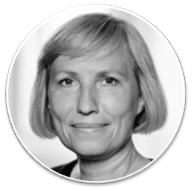
Irina Artemieva
GEOMAR Helmholtz Center, Kiel, Germany
iartemieva@gmail.com

Paolo Chiozzi
DISTAV University of Genoa (Italy)
chiozzi_rp@libero.it

Petr Dedecek
The Czech Academy of Sciences
Department Geothermics, pd@ig.cas.cz
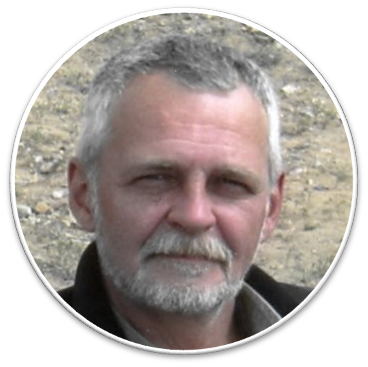
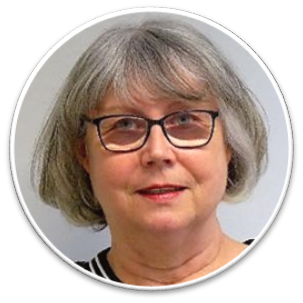
Andrea Förster
Helmholtz Centre Potsdam - GFZ German Research Centre for Geosciences
Geosystems - Section Geoenergy, Telegrafenberg, 14473 Potsdam, Germany, for@gfz-potsdam.de

Sven Fuchs
Helmholtz Centre Potsdam - GFZ German Research Centre for Geosciences (profile)
Geosystems - Section Geoenergy, Telegrafenberg, 14473 Potsdam, Germany, fuchs@gfz-potsdam.de

Gianluca Gola
National Research Council of Italy (IGG-CNR, profile)
Institute of Geosciences and Earth Resources, Via Giuseppe Moruzzi 1, 56124 Pisa (Italy), gianluca.gola@igg.cnr.it

William Gosnold
University of North Dakota
Harold Hamm School of Geology and Geological Engineering, Will.gosnold@engr.und.edu
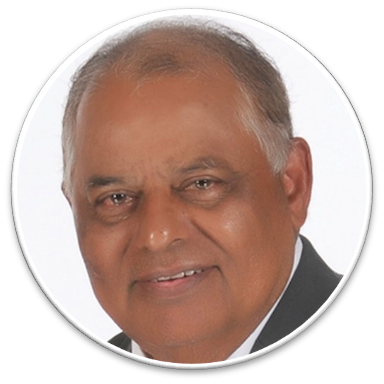
Valiya Hamza
National Observatory of the Ministry of Science, Technology and Industry
Rio de Janeiro, RJ, Brazil, valiyahamza@gmail.com

Robert Harris
Oregon State University
College of Earth, Ocean, and Atmospheric Sciences, Corvallis OR 97331 USA, rharris@coas.oregonstate.edu

Derrick Hasterok
University of Adelaide
Earth Sciences, derrick.hasterok@adelaide.edu.au
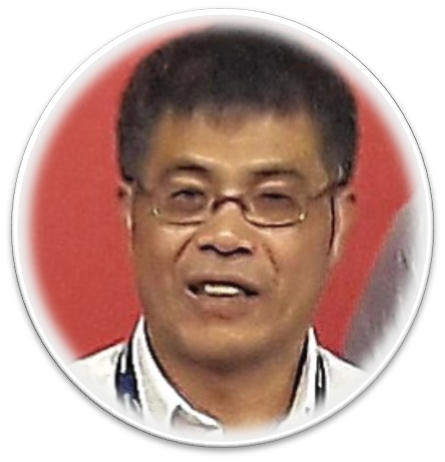
Shaopeng Huang
Specially Appointed Professor, Shenzhen University, Shenzhen, China, shaopeng@szu.edu.cn
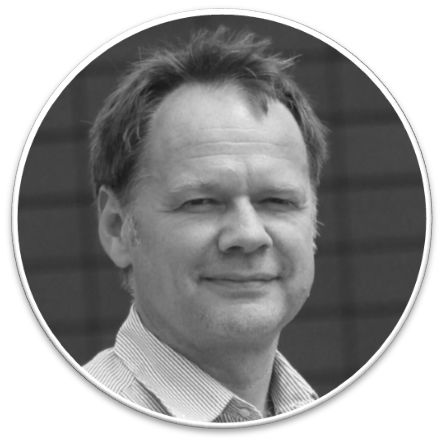
Thomas Kohl
Karlsruhe Institute of Technology (KIT)
Division of Geothermal Energy, thomas.kohl@kit.edu

Youngmin Lee
Korea Institute of Geoscience and Mineral Resources
Geothermal Resources Research Team, Daejeon, South Korea, ymlee@kigam.re.kr

Shaowen Liu
Nanjing University, China
168 Xianlin Avenue, Xixia District, School of Geography and Ocean Sciences, Nanjing 210023, China, shaowliu@nju.edu.cn

Podugu Nagaraju
Ministry of Earth Sciences (MoES), Government of India
Borehole Geophysics Research Laboratory (BGRL), Karad - 415 114, Maharashtra, India, nagarajupodugu@yahoo.com

Raquel Negrete-Aranda
Ensenada Center for Scientific Research and Higher Education
Geology Department, Earth Sciences Division, rnegrete73@yahoo.com

Jeffrey Poort
Sorbonne University & CNRS
Institute of Earth Sciences in Paris (ISTeP), 4 place Jussieu, 75005 Paris, France, jeffrey.poort@sorbonne-universite.fr
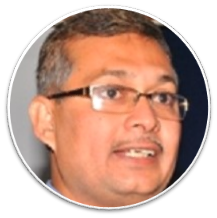
Sukanta Roy
Ministry of Earth Sciences, Govt. of India
Borehole Geophysics Research Laboratory, India, sukantaroy@yahoo.com

Akiko Tanaka
Geological Survey of Japan
National Institute of Advanced Industrial Science and Technology, AIST Tsukuba Central 7, 1-1-1 Higashi, Tsukuba, Ibaraki 305-8567, Japan, akiko-tanaka@aist.go.jp

Guzel Vakhitova
Bashkir State University
Physics and Technical Institute, Department of Geophysics, Ufa, Russia, guzel@geotec.ru

Massimo Verdoya (Chair)
University of Genova, Italy
DISTAV - Geofisica della Terra Solida, Italy, massimo.verdoya@unige.it
Top 5 long-time memberships
- 48 years, Hamza, Valiya (Brazil, 1975-2023)
- 32 years, Cermak, Vladimir (Czech Republic, 1971-2003)
- 32 years, Uyeda, Seiya (Japan, 1963-1995)
- 28 years, Clauser, Christoph (Germany, 1987-2015)
- 28 years, Huang, Shaopeng (USA/China, 1995-2023)
All members (1963-present)
A
- Alexandrov, A.L. (former USSR, Russia, 1971-1975)
- Allis, Rick (USA, 1987-1991)
- Artemieva, Irina (Denmark, 2019-2027)
B
- Balling, Niels (Denmark, 1983-1995)
- Banewell, C.J. (New Zealand, 1963-1967)
- Beardsmore, Graeme (Australia, 2011-2019, 2023-2027)
- Beck, Alan E. (Canada, 1963-1991)
- Becker, Keir (USA, 1979-1987)
- Beltrami, Hugo (Canada, 1999-2011)
- Birch, Albert Francis (USA, 1963-1975)
- Bodvarsson, G. (Iceland, 1963-1967)
- Boldizsar, T (Hungary, 1963-1975)
- Bullard, E.C. (Great Britain, 1963-1967)
- Buntebarth, Günther (Germany, 1983-1991)
C
- Cermak, Vladimir (Czech Republic, 1971-2003)
- Chapman, David S. (USA, 1975-2011)
- Chiozzi, Paolo (Italy, 2019-2027)
- Clauser, Christoph (Germany, 1987-2015)
- Clow, Gary D. (USA, 1991-2003)
- Correia, Antonio (Portugal, 1995-2011)
- Cull, Jim (USA, 1979-1987)
D
- Davis, Earl E. (Canada, 1999-2003)
- Dědeček, Petr (Czech Republic, 2019-2027)
- Demetrescu, Crisan (Romania, 2003-2019)
- Demezhko, Dmitry Yu. (Russia, 2015-2023)
E
- Evison, F.F. (New Zealand, 1975-1979)
- Evrard, Pierre (Belgium, 1963-1967)
F
- Förster, Andrea (Germany, 2015-2023)
- Facca, G.C. (Italy, 1963-1967)
- Francheteau, Jean (France, 1975-1979)
- Fuchs, Sven (Germany, 2019-2027)
G
- Girdler, R.W. (England, 1971-1975)
- Gola, Gianluca (Italy, 2019-2027)
- Gosnold, William D. (Germany, 2003-2023)
- Guangzheng, Jiang (China, 2023-2027)
- Guimaraes, Suze Pereira (Brazil, 2023-2027)
- Gupta, M.L. (India, 1971-1987)
H
- Haenel, Ralph (Germany, 1975-1987)
- Hamza, Valiya (Brazil, 1975-2023)
- Harris, Robert N. (USA, 2003-2027)
- Hasterock, Derrik (Australia, 2019-2023)
- He, Lijuan (China, 2011-2023)
- Healy, James (New Zealand, 1963-1975)
- Horai, Ki-iti (Japan, -0)
- Horvath, F. (Hungary, 1987-1991)
- Hu, Shengbiao (China, 1999-2011)
- Huang, Shaopeng (USA/China, 1995-2023)
- Hurtig, Eckart (Germany, 1975-1991)
- Hyndman, R.D. (Canada, 1971-1975)
J
- Jaeger, J.C. (Australia, 1963-1967)
- Jessop, Alan M. (Canada, 1963-1979)
- Jiang, Guangzheng (2023-2027)
- Joeleth, Argo (Estonia, 2003-2019)
- Jones, Michael Q. W. (South Africa, 1991-2019)
K
- Kinoshita, Masataka (Japan, 1979-1987)
- Kohl, Thomas (Germany, 2003-2023)
- Kukkonen, Ilmo T. (Finland, 1991-2015)
- Kutas, Roman (Ukrain, 1971-1987)
L
- Lachenbruch, Arthur (USA, 1971-1987)
- Langseth, M.G. (USA, 1963-1975)
- Lee, Youngmin (Korea, 2019-2027)
- Lee, William H.K. (USA, 1963-1967)
- Lewis, Trevor J. (Canada, 1975-1979)
- Liu, Shaowen (China, 2019-2027)
- Lomnitz, C. (Chile, 1963-1967)
- Lösing, Mareen (Germany, 2023-2027)
- Lubimova, Elena A. (former USSR, Russia, 1963-1983)
- Lucazeau, Francis (France, 1987-1995)
M
- Magnitsky, V.A. (former USSR, Russia, 1963-1967)
- Majorowicz, Jacek (Canada, 1983-2019)
- Manzella, Adele (Italy, 2003-2019)
- Mareschal, Jean-Claude (Canada, 1991-2011)
- McNitt, James (USA, 1963-1967)
- Milanovsky, Svet (Russia, 1991-1999)
- Mongelli, Francesco (Italy, 1975-1987)
- Morgan, Paul (USA, 1979-1987)
- Munoz, Miguel (Chile, 1991-1999)
N
- Negrete-Aranda, Raquel (Mexico, 2019-2027)
- Neumann, Florian (Germany, 2023-2027)
- Norden, Ben (Germany, 2023-2027)
P
- Palmason, Gudmundur (Iceland, 1971-1979)
- Pazvantoglu, Elif (Turkey, 2023-2027)
- Podugu, Nagaraju (India, 2019-2027)
- Pollack, Henry N. (USA, 1987-1999)
- Polyak, Boris G. (USA, 1975-1979)
- Poort, Jeffrey (France, 2019-2027)
- Popov, Yuri A. (Russia, 1999-2019)
- Pribnow, Daniel (Germany, 1995-2003)
R
- Regenauer-Lieb, Klaus (Australia, 2011-2019)
- Robinson, S.J. (Australia, 1971-1975)
- Romanovsky, Vladimir E. (Russia/USA, 1999-2003)
- Roy, Sukanta (India, 2003-2023)
- Rybach, Ladislaus (Switzerland, 1975-2003)
S
- Saar, Martin (Switzerland, 2015-2019)
- Safanda, Jan (Czech Republic, 1991-2015)
- Sass, J.H. (USA, 1987-1991)
- Schill, Eva (Switzerland, 2011-2019)
- Sclater, John G. (USA, 1971-1979)
- Sharbatyan, A. (former USSR, Russia, 1971-1975)
- Shen, Yxiang-jie (China, 1991-1999)
- Simmons, Gene (USA, 1963-1975)
- Smirnov, Ya. B. (former USSR, Russia, 1971-1987)
- Stal, Tobias (Australia, 2023-2027)
- Stegena, Lajos (Hungary, 1963-1987)
- Stein, Carol A. (USA, 1991-1999)
- Suetnova, E.I. (former USSR, Russia, 1987-1991)
- Sugrobov, V.M. (former USSR, Russia, 1971-1975)
T
- Tan, (China, 1987-1991)
- Tanaka, Akiko (Japan, 2019-2027)
- Taniguchi, Makoto (Japan, 1999-2003)
- Thamrin, M. (Indonesia, 1983-1991)
- Tongiorgi, E. (Italy, 1971-1975)
U
- Udintsev, G.B. (former USSR, Russia, 1963-1967)
- Uyeda, Seiya (Japan, 1963-1995)
V
- Vakhitova, Guzel (Russia, 2019-2023)
- Vasseur, Victor (France, 1979-1987)
- Veliciu, Serban (Romania, 1995-2003)
- Verdoya, Massimo (Italy, 2003-2027)
- Villinger, Heinrich (Germany, 1999-2015)
- Von Herzen, R.P. (USA, 1963-1975)
W
- Wang, Kelin (Canada, 1983-1995)
- Wang, Yibo (China, 2023-2027)
- Watanabe, T. (Japan, 1975-1979)
- Wheildon, J. (England, 1975-1979)
- Williams, Collin (USA, 2011-2019)
Y
- Yamano, Makoto (Japan, 1987-1999)
Z
- Zui, Vladimir (Belorussia, 1987-1999)
